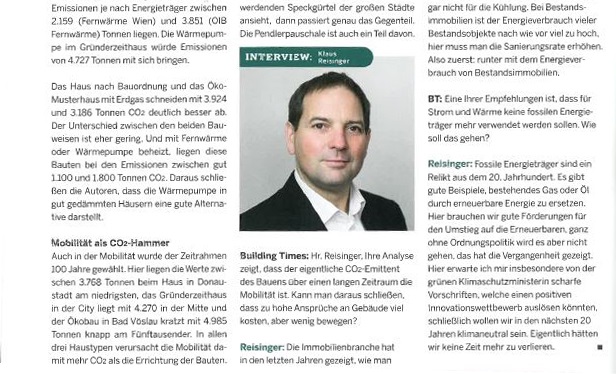The construction and operation of houses cause more or less CO2 depending on the energy source. But the mobility associated with the location is the real hammer, shows a recent analysis by IG Lebenszyklus Bau.
Franz Artner
What is a "climate-neutral" building? Is it a passive house with extremely low heating requirements and wood heating? Is it a plus-energy building that temporarily generates more energy than the users consume? Or is it an old Gründerzeit building that has long since shed its CO2 backpack from its construction due to its long service life? Depending on how you look at houses, their location and their use, you will come to different conclusions. So the matter of climate neutrality is not quite that simple; only a comparison makes one certain.
A working group of IG Lebenszyklus Bau has undertaken this comparison and dealt with the issue very intensively. The result is now a guideline that was presented at the 10th IG Congress. For its development, three building types with different energy sources for space heating and hot water were analysed. The observation period for all considerations was defined as 100 years, because this corresponds to the average residence time of CO2 in the atmosphere. For the sake of comparability, the houses used in the calculations house the same number of users, regardless of location or type. The team wanted to know about CO2 emissions in construction, operation and mobility associated with the houses. This is therefore a comprehensive analysis.
The entire article can be read here.




